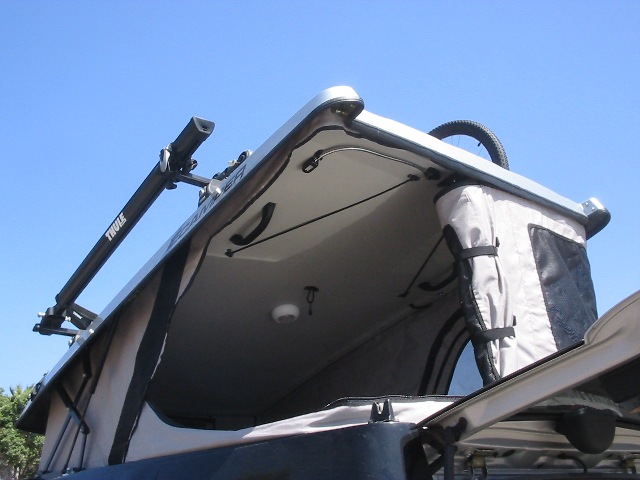Upstart engineer redefines the 'hybrid' vehicle with innovative pop-up campers

The idea behind San Diego-based Ursa Minor Vehicles, which may well be the only U.S. company that converts Honda Elements and four-door Jeeps into pop-top campers, started as a personal project for engineer John Gish.
Originally the owner of a boat company he bought in 2005, Gish quickly realized the seasonal nature of that business. “It was during the slow winter months that I first started tinkering around with campers,” he says. “I had a Volkswagen camper, and I was thinking about buying a new one but I realized that it wasn’t much of a daily driver -- loved going camping in it, hated going to the grocery store or on a date in it. And then I thought maybe a pop-top could go on the Element, and things just really clicked in terms of layout -- the sunroof, the size, Honda’s reputation for longevity and the fact that we had a company that made fiberglass stuff.”
Pop-up campers are a pretty niche category, one that peaked around 1998, when about 63,000 of them were sold in the United States. Their popularity has been squeezed by sales of trucks and SUVs that can be used to haul outdoor gear, but that also can be used for everyday driving, and by an increased in sales of larger recreational vehicles (RVs) that can become a more cushy home away from home. But in certain markets, such as California where Ursa Minor is based, the form factor is starting to attract younger families who would prefer not to pitch a tent but aren't ready to take on an extra monthly payment to buy an RV.
After building the first "ECamper" for himself in the winter of 2006, Gish and his small family went camping in the converted vehicle. As they traveled, people would see the pop-top, literally do a U-turn and chase down the Gishes to ask where they got it and, more importantly, where they could get one of their own. That was seven years and 334 pop-top conversions ago, and it's little wonder that Gish credits word-of-mouth for 80 percent of his sales.

While there are other companies that convert cargo and passenger vans into pop-up campers, what makes Ursa Minor unique is its focus on transforming midsize vehicles that can serve other purposes aside from camping. The pop-up component for the Honda Element adds about 130 pounds to the vehicle, and about 4.5 inches more height when it is in the latched-down position. When the module is hoisted (using two gas-powered struts), it creates a 7-foot by 4-foot sleeping compartment. The hard parts are made from a composite carbon-fiber, while the sides and ends are made from a fabric usually used for boat covers. The compartment can be unzipped for ventilation or closed for protection, if there is moisture in the air.
The conversion process, which enables Gish to use his engineering and design skills, takes anywhere from four days to one week and costs, on average, $6,500 per vehicle. Gish says Ursa Minor receives orders every day and fulfills an overall average of about 10 each month for customers who have either specifically purchased a Jeep or Element for the conversion or who currently own one of the vehicles and want to give it a makeover.
“People mostly learn about our product by seeing other people using them, and that’s a very hard thing to accelerate," Gish says. "If you have a product where there’s a market for it and a magazine devoted to it, you know how to advertise to those customers fairly easily but when you have a product like ours where it’s used by guys who fish, photographers, cyclists, mountain climbers, kayakers and every day outdoor enthusiasts you can try to grab one segment at a time but it’s pretty expensive to say ‘Hey, I’m going to chase the bicycle guys now’, it’s just not cost-effective.”
Even though the last Honda Element was produced in 2011, there are still 330,000 on the road that were originally made and that could be eligible for conversion. Meanwhile, the Jeep conversions are taking off faster than the Elements, making Gish’s goal of slow and steady growth for his unique sort of hybrid something surely within reach—especially among an up-and-coming generation of drivers interested in exploring the outdoors, while managing their own environmental footprint more carefully.
Enjoyed this article? Sign up for our weekly newsletter containing all the in-depth stories from our magazine, in which we delve into the latest ideas that inspire us, draw our skepticism or pique our curiosity. In it, we bring you dispatches by correspondents around the globe, top domestic reporters and thought-provoking opinion columnists.
This post was originally published on Smartplanet.com